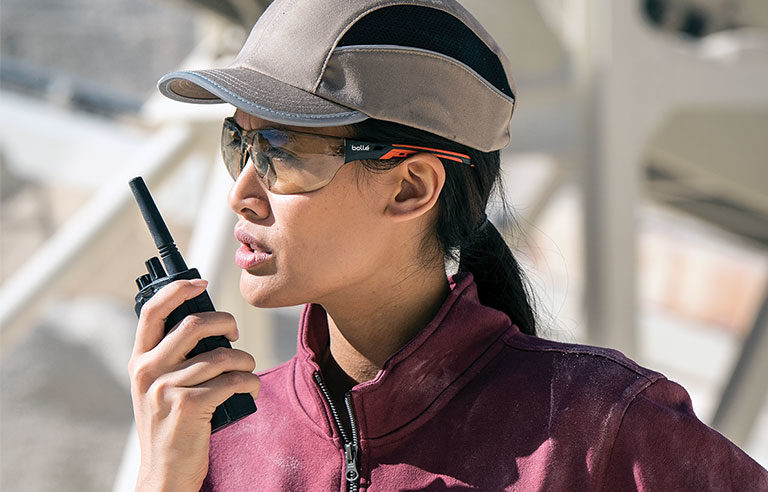Which safety glasses?
With the workforce becoming so much more versatile, are there different types of safety eyeglasses recommended for different kinds of work environments?

Photo: Bollé Safety
Responding is Brian P. Barry, vice president of sales, the Americas, Bollé Safety, Carlsbad, CA.
Whether you’re working in a poorly lit manufacturing facility or out on a construction site on a bright, sunny day, the safety eyewear market has evolved to the point where specific lenses are tailored to suit specific needs. This includes prescription lens requirements.
If you haven’t taken a look at the safety eyeglasses market recently, you may be surprised at how much has changed. Innovations from research and development labs now allow leading manufacturers to develop lenses for a wide range of specific uses.
Perhaps one of the biggest advancements is new lens technologies that prevent fogging and scratches. For many workers, both of these issues can present significant hazards.
Beyond fog and scratch prevention, the industry has also evolved to the point that “use-specific” lenses are now available. Some workers are battling glares and shadowing that come from working in varying light conditions, especially if they’re moving from indoor to outdoor jobs, and vice versa.
Workers in widely different environments, from factories with LED lighting to outdoor jobsites with exposure to ultraviolet rays, can be exposed to a variety of hazards throughout the day. High-risk activities such as welding, mining, drilling and electrical work require visual precision while protecting eye health. Working in low light, LED lighting or full sunlight requires safety glasses designed to reduce eyestrain and filter UV rays.
Protective eyewear must be compatible and adaptable to changing conditions and circumstances that workers face. Tinted lenses now come in a wide range of colors designed for ultimate performance enhancement. Lenses, including some with polarization, are designed for a full range of outdoor uses.
For example, copper- and copper flash-colored polycarbonate lenses protect the eyes of truck operators, drivers, nightshift workers and those who operate in factories with LED lighting.
For outdoor activities, including in marine and drilling environments, or long-distance drivers, silver flash, cobalt flash and fire flash lenses ensure protection in full sunshine.
For workers in low-light conditions, quartz lenses improve depth perception and contrast by increasing visual acuity. Bronze tints enhance vision in low luminosity, including in mines and during electrical and outdoor work. By absorbing more than 75% of blue light, visual contrast is improved for better accuracy and safety.
People who primarily work outdoors may choose dark-colored polarized lenses, which improve visual comfort, contrast and depth while reducing strain. These are a recommended option, as they allow for infallible protection during outdoor activities such rig drilling. A total UV blocker – such as onyx lenses, which filter 99.99% of UVA and UVB rays – is ideal for construction and building industries.
If you haven’t taken a look at the safety eyeglasses market recently, you may be in for a pleasant surprise.
Editor's note: This article represents the independent views of the author and should not be construed as a National Safety Council endorsement.
Post a comment to this article
Safety+Health welcomes comments that promote respectful dialogue. Please stay on topic. Comments that contain personal attacks, profanity or abusive language – or those aggressively promoting products or services – will be removed. We reserve the right to determine which comments violate our comment policy. (Anonymous comments are welcome; merely skip the “name” field in the comment box. An email address is required but will not be included with your comment.)

